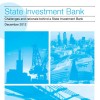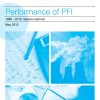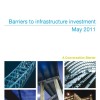The 2014 Autumn Statement left little room for manoeuvre, the deficit is not as low as the government would like and the temptation for giveaways is significant. What can be said though is that whilst the deficit challenge remains, the focus on innovation and reform rather than grand gestures is a welcome relief.
I use to illustrate this point two particular measures announced in the Autumn Statement. The first is that of apprenticeships. The education system and tax system in reality does not encourage the knowledge and skills transfer that is possible between businesses and youngsters entering the labour market. Yet there has traditionally been a mix of mismatched and poor incentives to encourage limited business and individuals to undertake such schemes. This has now potentially changed.
The Autumn Statement announced that it was abolishing employer National Insurance contributions for apprentices aged under 25 on earnings up to the upper earnings limit. This in the grand scheme of spending is not a significant sum but the message and incentive is right. It encourages that transfer from education to work and helps to build a relationship between business and future potential employees and output. Such innovative thinking is long overdue with business craving practical skills to improve productivity.
The second measure that stands out is the reform of stamp duty. This tax has long created distortions in the housing market. It is well overdue for reform but the changes announced today should be part of a continued effort to reform the housing market to ensure that future generations are able to own their own home, which is of a reasonable quality, at an affordable rate. In this respect stamp duty is an issue because it creates artificial holes in pricing where buyers have to spend significantly more to reach the ‘next level’ of the ladder. It is no longer just the first time buyers that don’t have the capital but also the second movers. This is why such reform is so important and innovative. I would, however, also stress that this is only part of the solution. It is a demand side response where as in actual fact the UK suffers a supply side problem. This is why the measures to increase the degree of house building are welcomed but do not equate to anything near the 260,000 homes a year required to meet population growth.
So whilst the majority of this statement contains small changes there is some significant progress. It should, however, never be underestimated that the measures announced are actually the first steps to what are long needed reform.
Autumn Statement: Summary of other main points
TAX
- Stamp Duty rates overhauled. Top rate now 12% on properties worth more than £1.5m effective from midnight Wednesday. There will be no duty on properties worth up to £125,000 then 2% rate on the portion up to £250,000 then 5% up to £925,000, then 10% up to £1.5m.
- Higher rate income tax threshold to rise to £42,385 next year.
- Income tax-free personal allowance to rise to £10,600 rather than the planned £10,500 next year, giving wage boost of £825 a year.
- ISAs can be inherited tax free.
- Fuel duty remains frozen.
- People who die under 75 to be able to pass on annuities, tax free.
CORPORATE TAX
- A so-called ‘Google Tax’ will introduce a levy of 25% on profits shifted abroad by multi-national firms. The Diverted Profits Tax aims to raise more than £1bn over five years.
- Banks to pay almost £4bn more in tax over next five years, with profits which can be offset by losses for tax purposes to be limited to 50%.
- Inflation-linked increase in business rates capped at 2% and discount for shops, pubs and cafes increased by 50% to £1,500.
SAVINGS
- Limit on saving in New ISAs to rise to £15,240
DEVOLUTION & ‘NORTHERN POWERHOUSE’
- Business rates for Wales to be devolved to Welsh Government.
- Plans law to devolve corporation tax to Northern Ireland if the Northern Ireland executive shows it can manage the financial implications.
- Investment of £250m in new advanced material science institute in Manchester with branches in Leeds, Sheffield and Liverpool. Tendering for new franchises for Northern Rail and Trans-Pennine Express to ensure modern trains.
EDUCATION
- Government-backed student loans of up to £10,000 are to be made available for postgraduates.
TRAVEL
- Air Passenger Duty for under-12s abolished from May 2015. Scrapped from 2016 for under-16s.
SAVINGS
- A further £10bn of Whitehall efficiencies is planned while £5bn more is sought from crackdown on tax evasion and avoidance.
- Public service pension reforms will be completed, saving £1.3bn annually.
SPENDING
- NHS gets additional £2bn every year for frontline services. A £1.2bn investment in GP services will be paid for from foreign exchange fines.
- Government spending £10bn less than forecast this year but warns the coming years will require “very substantial savings in public spending.”
PUBLIC FINANCES
- Office for Budget Responsibility (OBR): Forecast 2014 GDP growth upgraded to 3% from 2.7%. 2015 forecast raised to 2.4%.
- “Deficit is falling this year and every year.” Deficit now cut in half. OBR forecasts borrowing to fall from £97.5bn in 2013/14 to £91.3bn in 2014/15 (£5bn above annual target). Budget surplus of £23bn predicted for 2019/20.
- Osborne says deficit reduction better than some predicted as welfare spending is lower and interest paid on national debt is considerably lower.
- OBR predicts wage growth above inflation for the next five years.
Go to: http://businessinnovate.co.uk/








